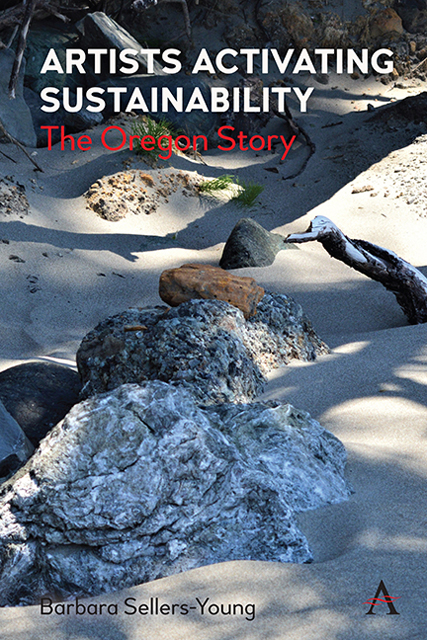Book contents
- Frontmatter
- Dedication
- Contents
- Acknowledgments
- List of Figures
- Introduction: Art, Environment and Metaphor
- 1 Environmental Activism, Arts and the Land of Eden Landscape One: High Desert Basin and Range
- Landscape One High Desert Basin and Range
- Landscape Two Columbia Gorge and Plateau
- Landscape Three Cascade Range
- Landscape Four The Willamette Valley
- Landscape Five Rogue River Valley
- Landscape Six Oregon Coast and Coast Range
- Index
8 - Salem’s Gaiety Hollow: Lord and Schryver Landscape Architects and the Conservancy
Published online by Cambridge University Press: 10 January 2023
- Frontmatter
- Dedication
- Contents
- Acknowledgments
- List of Figures
- Introduction: Art, Environment and Metaphor
- 1 Environmental Activism, Arts and the Land of Eden Landscape One: High Desert Basin and Range
- Landscape One High Desert Basin and Range
- Landscape Two Columbia Gorge and Plateau
- Landscape Three Cascade Range
- Landscape Four The Willamette Valley
- Landscape Five Rogue River Valley
- Landscape Six Oregon Coast and Coast Range
- Index
Summary
Lord & Schryver gardens are characterized by a formal structure—defined by hedges, fencing, and pathways—planted with flowering trees, shrubs, perennials, biennials, and annuals to achieve an informal charm.
Ruth RobertsSalem, the state capital of Oregon, sits astride the Willamette River in the north-central part of the Willamette Valley with the Coast Range to the west and the Cascades to the east. The original inhabitants were the Kalapuya people who had lived in the mild climate of Willamette Valley for thousands of years as hunters and gathers who considered “humans, animals and the land as interconnected.” The yearly life of the Kalapuya moved with the seasons. In the spring, they moved across the valley floor harvesting camas and hunting migratory birds. With the heat of summer, they moved to the foothills where men hunted and women picked and preserved wild cherries, elderberries, blueberries and hazelnuts. The coolness of the fall brought on a period of burning the prairie and harvesting of acorns. The cooler temperatures of winter caused them to return to their large cedar bark and plank lodges. As Boag notes, “The Kalapuya's continuous cycle of seasonal movements among various eco-systems of the valley is one indicator of stability in the human environmental relationship.” The landscape was changed following the establishment of a Methodist mission by Jason Lee near the Kalapuyan village of Tchimikiti in 1841. Settlers followed dividing the land into plots and plowed the fields following styles of land use that they had evolved east of the Mississippi. The Kalapuya people were moved in 1855 to the Grande Ronde reservation that is still located between Salem and the coastal community of Lincoln City.
Elizabeth Lord (1887–1976) and Edith Schryver's (1901–1984) joint venture of a landscape architecture business entered into the history of Salem in 1929. Their visual aesthetic was the European influences from their training at the Lowthorpe School of Landscape Architecture in Groton, Massachusetts. In their 40 years of practice, their design style influenced over 200 gardens throughout the Pacific Northwest. They lived and ran their business out of a house on Mission Street in an area referred to as Gaiety Hill which was then and is still today on the edge of Salem's business district.
- Type
- Chapter
- Information
- Artists Activating SustainabilityThe Oregon Story, pp. 135 - 148Publisher: Anthem PressPrint publication year: 2022

